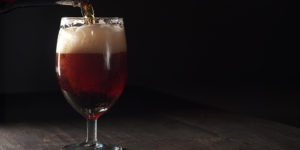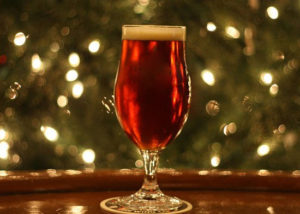We hate to break it to you but summer is long over. Those refreshing session IPAs just seem to lack a little something something… so we turn our attention to bigger beers that will keep us warm during our damp Vancouver winter. My personal favourite style to get me through the dreariness is a nice barleywine.
 Whether you prefer the maltier English style or the more hop forward American variety, you can generally expect similar things from the style. The first thing to note is that this is a high ABV beer, which is what gives it that warming feeling. The alcohol in a barleywine should be present and noticeable, but not hot or solventy. The last thing you want is to have your beer taste like bug spray after waiting months to try it. Controlling fermentation temperature can help keep these flavours from manifesting, but if they show their faces just let it age a while longer and they should mellow over time.
Whether you prefer the maltier English style or the more hop forward American variety, you can generally expect similar things from the style. The first thing to note is that this is a high ABV beer, which is what gives it that warming feeling. The alcohol in a barleywine should be present and noticeable, but not hot or solventy. The last thing you want is to have your beer taste like bug spray after waiting months to try it. Controlling fermentation temperature can help keep these flavours from manifesting, but if they show their faces just let it age a while longer and they should mellow over time.
The malt will be similar for both English and American styles, with a complex profile ranging across biscuity, roasty, toasty, all the way to caramelly. Your exact grain bill will ultimately determine how these flavors develop. For example, a higher concentration of crystal malts will bring out caramel flavours, while more roasted malts will give you a…well,a roastier flavour. Don’t be afraid to play with specialty malts. The smell and taste of the grain will give you a good idea of what impact it will have on the beer. You will notice that the malt is more prominent in the English style, while the hops come forward more in the American. Exactly how you would think of an IPA.
Speaking of hops, you need a fair bit to counter all of that malty sweetness. A big malt presence dulls the bitterness of a hop, so even an english barleywine that is on the sweet side can clock in around 50-60 IBU. In the case of the American style you will want to approximately double that. For the English version try to stick with English hops, but for the American version pretty much anything goes.
One consideration when making a big beer like this is that you can run into trouble when bottle conditioning. As the alcohol goes up, the yeast has more trouble getting going. This can result in some disappointment later on when you go to crack open your first bottle six months later to have flat beer. One trick I’ve used to avoid this is to pitch some fresh yeast while bottling. Obviously if you’re kegging this will not be an issue, but make sure you keep the carbonation low to moderate.
This month’s recipe comes from my archives, and is called the Boxing Day Barleywine. It is was named thusly because I brewed this one on Boxing Day 2014. Clever, I know. In any case, this is a good simple recipe that will get you started.
With this brew I used a technique that would be more typical of a scotch ale but I feel helps develop a richness of flavour. During the 90 minute boil, take a small portion(about 2L of the 13L batch) and boil it down until it is a thick syrup and then add it back to the boil. If you want to americanize the recipe, throw some late additions of a flavorful North American hop variety.
Boxing Day Barleywine
English Barleywine
Recipe Specs
—————-
Batch Size (L): 13.2
Total Grain (kg): 4.871
Total Hops (g): 42.52
Original Gravity (OG): 1.085 (°P): 20.4
Final Gravity (FG): 1.021 (°P): 5.3
Alcohol by Volume (ABV): 8.35 %
Colour (SRM): 12.4 (EBC): 24.4
Bitterness (IBU): 52.4 (Average)
Brewhouse Efficiency (%): 75
Boil Time (Minutes): 90
Grain Bill
—————-
3.897 kg Pale Malt (80%)
0.487 kg Melanoidin (10%)
0.292 kg Vienna (5.99%)
0.195 kg Crystal 60 (4%)
Hop Bill
—————-
28.3 g East Kent Golding Pellet (4.7% Alpha) @ 60 Minutes (Boil) (2.1 g/L)
14.2 g Galena Pellet (12.5% Alpha) @ 60 Minutes (Boil) (1.1 g/L)
Misc Bill
—————-
Single step Infusion at 67°C for 60 Minutes.
Fermented at 20°C with WLP013 – London Ale
Notes
—————-
Boil Down 2L to syrup in separate pot and add back to the boil
Cheers!
Jesse Witoszkin
Leave a Reply